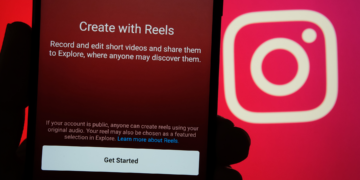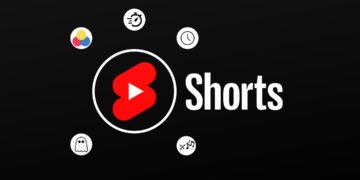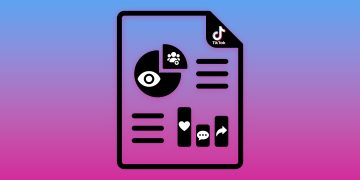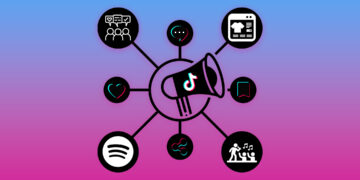TikTok’s algorithms

- What content TikTok's algorithms analyze
- Which feedbacks TikTok takes into account and which are the most important ones
- On the basis of which criteria a video is suggested to a user
- How to stimulate the TikTok algorithm
Around a year ago, we showed you in one of our posts how TikTok’s algorithm works. Now, internal documents have been leaked and made public by the New York Times, allowing for an even more in-depth look. Considering the TikTok algorithm is viewed by many as revolutionary, experts were at first surprised to discover that it is not fundamentally different from the algorithms on YouTube or Spotify. In this two-part post, we will explain how it is constructed and how to best take advantage of it.
Let’s not pretend, TikTok’s algorithm, of course, primarily serves business goals. It is supposed to attract more active users and keep them engaged on the platform. The stronger the engagement and the longer users stay on the app, the more data TikTok can gather, which will improve the algorithm even more.
Just like other social media platforms and DSPs, TikTok suggests videos to their users that are similar to those that you have already watched. Additionally, TikTok also suggests videos that have been viewed by users that consume similar videos to you.
So far, so familiar. The question is: What are the deciding factors that determine which videos are shown?
Analysis of content
As soon as a user uploads a video, several independent but connected algorithms will analyze its content. To be precise, the following parameters are examined:
- Video description
- Video format
- Hashtags
- Used songs/other sounds
- Used effects
But the analysis doesn’t end with the metadata that you provide. The audio component of the video is also analyzed, meaning what is said or sung in the clip. All contents of the visual part are scanned, as well. That means, that the algorithm can tell, for instance, that a specific video features a woman, a laptop, and a coffee mug. The algorithm thus obtains a plethora information that are not necessarily already discernible from the metadata.
This algorithm check also serves to spot suspicious videos which will then be manually evaluated. Once it passes the automatic, or sometimes also manual test, the video will be shown to a small group of users to get some initial feedback, meaning data. If the feedback is positive, that is, if it gets lots of views, comments, shares, and is rewatched multiple times, it will be suggested to a larger group. If that feedback then remains positive, the process starts all over again and the video continues to be shown to more and more people.
Feedback
TikTok differentiates between two kinds of feedback:
- Active feedback (likes, comments, follows)
- Passive feedback (playtime, completion rate – meaning how often the video is watched til the end –, rewatch rate)
Of these different feedback parameters, the completion and rewatch rates have the biggest influence. Compared to other platforms, shares only play a limited role. This is probably due to the fact that there are much fewer shares than likes or comments. And the golden rule is clear: the more data, the better.
If the performance declines, the video will no longer be recommended by the algorithm. Should the video get good viewership even without the push from the algorithm, say due to creator promotion or other factors, it could get a second chance and be picked up by the algorithm again to be shown to new users. But how does TikTok decide which videos to show which users?
User analysis
The algorithms can already tell a user’s preferences after just 8 videos they’ve watched. Especially when only a small amount of data is available, things like device, country, and account settings, as well as language preferences and device model also play a role. The more interactions occur between the user and the platform, the more accurate, of course, the suggestions will be.
Based on a user’s interactions and history, the algorithm will make up a score for each video. The bigger the chance that a user will like a video, comment on it, or watch it til the end, the higher the score. The videos with the highest ratings will end up in the user’s For You feed.
Engagement
Another important factor is how the creators behave. How often do they upload content (the more, the better), how many users visit their profile and look at other videos there, and does the creator make use of every possible outlet – for instance, do they use livestreams or the donation feature? The leaks show that TikTok does give smaller creators the chance to go viral, as well. Additionally, the algorithm is very strongly programmed to avoid repeats.
Optimize your uploads
If you want to be successful on TikTok, you should know that the platform takes time. TikTok is not a site you can maintain on top of seven other social media platforms. You either invest time to produce good content or you can pretty much forget about it. This is also because you should always make exclusive content for TikTok. Using the same clip for Reels, Snapchat, Shorts, TikTok, and Spotify Canvas would be counterproductive. Additionally, you should be posting at least once a week. If you’re really serious about it, a minimum of once a day would be even better.
Precise video descriptions and fitting hashtags make it easier for the algorithm put the video in the right categories. Especially if you’re new on TikTok or don’t have as many followers yet, you should try to find your niche. You can steer your account in the right direction using good descriptions and hashtags. Additionally, you should make sure that the quality of the video (such as the lighting) as well as the elements in it are all good. Let’s keep in mind: everything seen in the video is scanned by the algorithm.
Pay special attention to the first seconds of the clip, since they need to immediately grab the audience. Since many users watch videos with no sound, it’s well worth putting in some text, as well. Of course, you should also regularly use your own music, although maybe not in every single video.
Analytics
To understand who your audience is on the one hand, and which videos perform well on the other, you should constantly analyze the data that TikTok provides. That way, you can find out, for instance, how many users integrate your music into their posts.
TikTok snippet via iGroove
To make sure you’re getting the most out of the sound integrations on TikTok, iGroove now offers the opportunity to upload a separate TikTok snippet. You can also select a separate release date for it. That means that you could, for instance, make the snippet available on TikTok two weeks prior to a release to build hype for it and get people excited for when it comes out.











